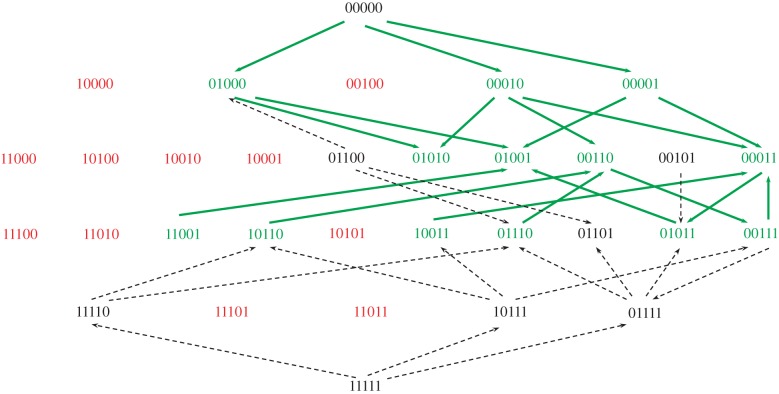Figure 1.
The empirical topography of the local fitness landscape describing adaptation of a tobacco-adapted TEV to its novel host Arabidopsis thaliana Ler-0. Each bit string represents a viral genotype, with 0s meaning wild-type alleles and 1s meaning mutant alleles. Genotypes are ordered top-down starting from the ancestral wild-type virus (00000) and finishing with the genotype that carries the five mutations analysed in this study (11111). Each row represents genotypes with equal numbers of mutations. Genotypes marked in red are those with fitness lower than the ancestral (including lethals), genotypes in black have equal fitness than wild-type, and genotypes marked in green are significantly fitter than the tobacco-adapted wild-type [22]. Solid green lines represent likely adaptive walks (always connecting beneficial genotypes) and dashed black lines pathways that involve genotypes not significantly better than the ancestral (neutral pathways). The landscape is highly epistatic and contains two disconnected adaptive peaks corresponding to genotypes 01001 and 00110 (see table 1 for details on each mutation). Peak 01001 corresponds to the maximum fitness of this local landscape. (Online version in colour.)

